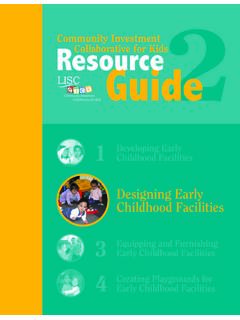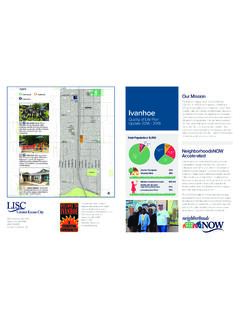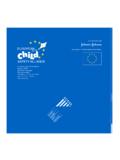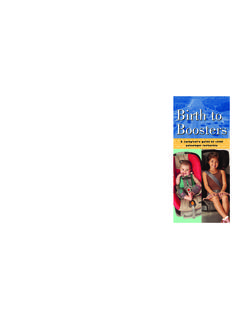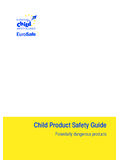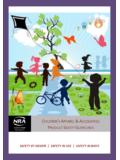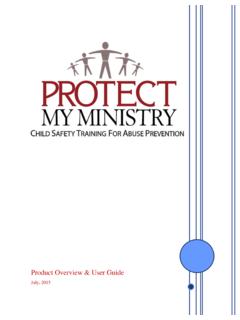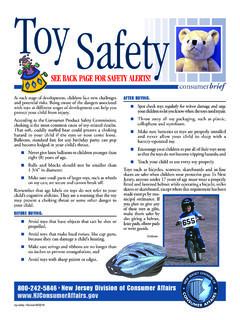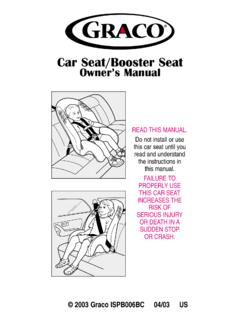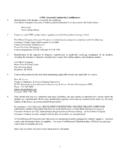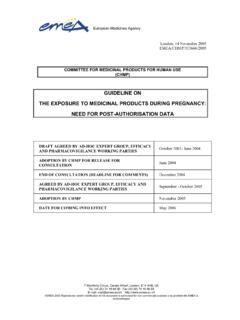Transcription of CICK cover final - Local Initiatives Support Corporation
1 4 guide Resource Community Investment Collaborative for KidsCreating Playgrounds for Early Childhood FacilitiesDesigning Early Childhood Facilities Equipping and FurnishingEarly Childhood Facilities Developing Early Childhood Facilities 4 guide Resource Community Investment Collaborative for KidsPublished by the Local Initiatives Support Corporation /Community Investment Collaborative for KidsWritten by: Mav Pardee, Amy Gillman, and Cindy LarsonIllustrations by: Arthur AssociatesJune 2005 The authors and publisher are solely responsible for the accuracy of the statements and interpretations contained in this resource guide . Contents Introduction 1 Regulations and Guidelines 1 Children s Gross Motor Development 2 Organizing the Space 3 Creating a Natural Playscape 6 Establishing Outdoor Activity Areas 6 Climbing Structures 7 Fall Zones and safety Surfaces 8 Slides 10 Swings 10 Riding Toys 11 Bouncing and Balancing 11 Dramatic Play 11 Art 12 Games 12 Gardening and Nature 12 Sand and Water 12 Special Considerations for Infants and Toddlers 13 Considerations in Selecting Equipment 14 Get Professional Advice 14 Health and safety 14 Aesthetics 15 Choice of Materials 15 List of Playground Equipment Catalogs 17 Scale 17 Play Value 17 Managing the Cost of the Project 18 Resources 19 Organizations 19 CONTENTSiR Rather than beginning with catalogs and decisions about equipment and surfaces, start with what it is that children should be able to do outside, if only we could make it happen.
2 Then decide how best to accomplish this. Quoted from Are We Losing Ground? by Jim Greenman as printed in child Care Information Exchange; March, the country, there is growing concern about childhood obesity. By the time American children enter public school, 15% of them are classified as obese. Since many patterns of activity are established in early childhood, child care programs play a critical role in establishing active habits and offering age-appropriate physical challenges that Support healthy growth and outdoor play is an important part of a child s day, so planning outdoor space and memorable outdoor activities are essential components of developmentally appropriate care. Vigorous physical play offers children a chance to spend time together in ways that are quite different from their play indoors. It offers children an opportunity to test their physical skills and abilities. It builds strength and coordination, and stimulates the imagination as children engage in fantasy play or interact with natural materials and the scents, sounds and textures of the change of pace is important as well.
3 Outdoor voices and laughter can be more exuberant; play can be louder and sillier; and children are encouraged to run, climb and jump instead of discouraged from doing so. The change of scenery can be equally valuable. Outdoors there are opportunities to mess about and explore materials in new ways. Exposure to sunshine, shade and the elements helps children learn more about their guide will help you plan your center s outdoor play space to achieve a successful environment for young children. It will begin by considering the types of activities that children can enjoy outdoors, and will suggest equipment and materials that Support that play. REGULATIONS AND GUIDELINESF irst and foremost in considering your playground, make sure that you become familiar with which regulations govern playground design and use. Ideally your playground project should be pursued in conjunction with an architect who is familiar with child care design and Local regulations. The architect will then be responsible for ensuring that the playground meets all required regulatory standards and building codes.
4 If you are not working with an architect on design, it will be your responsibility to obtain copies of all applicable codes and regulations, speak with any relevant officials, such as state fire marshals, and ensure that your proposed design is in keeping with all relevant addition to understanding state child care licensing regulations for outdoor playgrounds, you must also become familiar with any state or Local fire or building codes that relate to how you design and equip your playground space. Also, if you are aspiring to achieve accreditation for your center through the National Association for the Education of Young Children (NAEYC) make sure that you understand the guidelines set out in those standards for children s outdoor play areas. At the end of this guide you will find a list of national organizations with guidelines governing the development of children s playgrounds and playground safety . Please note in particular the Consumer product safety Commission s Handbook for Public safety .
5 It is also important to become familiar with the new rules regarding play areas for special needs children developed by the Americans with Disabilities S GROSS MOTOR DEVELOPMENT Too often, the model for an early childhood playground is a scaled-down version of an exciting playground for school-aged children. Preschoolers are not just smaller than older children their physical skills, spatial orientation, judgment, and how they interact with their surroundings are all significantly different. The layout of a play area including sight lines, interest areas and equipment choices should be based on the ages and stages of the children who will use it, and always include appropriate safeguards. A summary of milestones in children s gross motor development is below, along with playground equipment ideas for each stage. While each child develops in an individual way, these guidelines can help in assessing the suitability of outdoor equipment and activities for children of different ages.
6 AGEDEVELOPMENTAL MILESTONESRECOMMENDED EQUIPMENTINFANTS(0-15 MONTHS) Develop on individual timetables Push and pull up Sit without Support Crawl Cruise or walk using objects or adults for Support Begin to stand and walk alone Soft surfaces Shade Tactile materials Water and sand Objects to crawl through Places to sit with adults Wind chimes and other sensory materials Safe plants to smell and touch Toys to push and pull Sturdy equipment to pull up onTODDLERS(15-33 MONTHS) Become increasingly mobile Push and pull toys while walking Learn to climb stairs Begin to use riding toys (with feet on ground) Run short distances Squat and balance on feet while playing Kick and throw balls Jump in place Climbing structures Slides Water and sand play equipment Places to crawl through, over, under Riding toys Sensory materials to engage sight, sound, touch, taste Structures (like playhouses) for make-believe Shady places to sit Loose parts for creative and imaginative play Places to run, throw balls, playORGANIZING THE SPACE If you think about the outdoor play space as an extension of the indoor learning environment, it is natural to consider different zones and activity areas as you plan the space.
7 1. Plan separate zones for quiet activities and active play; large group as well as individual or small group play; and play equipment. Make sure that activities that are adjacent to each other are compatible keeping in mind that the most active zones should be grouped together and away from the quiet zones. If your center is part of a housing complex, school, retail center or office building, you might also consider locating the most active (and often noisiest) play zones at some distance from your neighbors plan out your zones and to help determine where to locate equipment and other structures, consider the following: Environmental features: Note the overall shape of the space and its topography, and in particular any existing natural features like trees, shrubs, rocks, or sloping areas you may want to incorporate into your plans like putting a seating area around the base of a tree or building a slide into a small hill. Also, there may be some interesting views or landmarks you want to highlight through the placement of equipment or location of activities.
8 Sun patterns: Don t forget to look at sunlight and shade patterns at different times of the day and year to help figure out where you may need to place a shade structure or where it might be best to plant a garden. safety hazards: Make sure you are aware of any potential safety hazards INTRODUCTION3 AGEDEVELOPMENTAL MILESTONESRECOMMENDED EQUIPMENTYOUNG PRESCHOOL ( YEARS) Highest activity level of any age in the human life span Increasingly more adventuresome Run back and forth Throw and catch balls Pedal a tricycle Somersault Climb stairs Push and pull larger toys like a wagon Enjoy showing off climbing prowess Hop and jump increasingly well Structures for climbing and sliding Riding toys and paths to ride on Balance beams Playhouses Water and sand play equipment Loose parts for pretending, creating, building Talk tubes Telescopes Places to run, jump, play ball Materials to enhance all senses (wind chimes for sound, flowers for smell) Shade to sit, eat, read, relax Places to paint, draw and createOLDER PRESCHOOL (4-5 YEARS)
9 Physically competent Climb well, enjoy trying to go higher and higher Enjoy challenges Roll balls Skip on alternating feet Able to begin riding two-wheel bike Climbing and sliding structures that provide challenge for increasing skills Bikes and paths to ride on and explore Water and sand play equipment Art studios Structures for imaginative play Loose parts to enhance play Natural features to experience seasons Places to run, play ball, play games4such as the presence of underground or overhead utilities or wiring, or sharp or protruding edges on the building. Points of Access: Note the location of doors to the outdoor area from the classrooms and/or other entry points onto the playground, and determine emergency access and egress routes or delivery routes if supplies are moved through the play area. Keep in mind how these access points can interfere with the flow of playground activities or present a security issue. 2.
10 In order to maximize children s play experience and ensure their safety around play structures, be sure to plan for appropriate circulation routes or pathways around the play space. Avoid laying out long straight paths in favor of shorter more carefully planned paths of varying widths. These pathways should provide a clear route around the play area, ensuring that children do not interfere with each other s play or encroach on the safety zones around large Plan for seating for children and adults in various areas outdoors. Use benches, tree stumps, picnic tables or other types of seating. Provide old quilts or blankets for picnics and story time. Provide children with several places to sit and watch the Plan for convenient storage of outdoor toys and equipment. Storage should be secure and weatherproof, and organized for different types of equipment. Depending on what types of equipment and materials your center needs to store, several smaller point-of-use storage units may work better than a single large storage shed that becomes a jumble of sand toys, swing parts, vehicles and other toys.

